On June 21st, the Research Center for Ecology and Environmental Sciences of Northwestern Polytechnical University (hereinafter referred to as the RCEES) published three Research articles in the same issue ofSciencewith Northwestern Polytechnical University as the correspondence author unit. And the articles are collected in the column "Ruminant Genome", whichwas posted on the cover of the current issue.
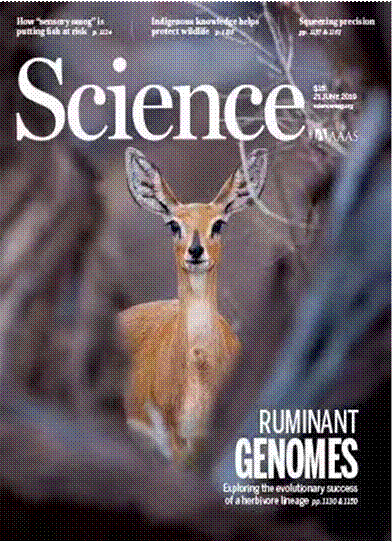
This study, for the first time in the world, systematically analyzed the ruminant genome and revealed the genetic code of some important characteristics of ruminants. And Northwestern Polytechnical University is the first author’s affiliation of the two articles, and the first correspondence author’s affiliation of the the third article. It is worth noting that graduate students from RCEESof NPU have played an important role. These achievements not only mark the significant progress of our school’s basic research in the field of ecology and environmental protection, but also mark the outstanding achievements in the NPU cultivation of graduate students.
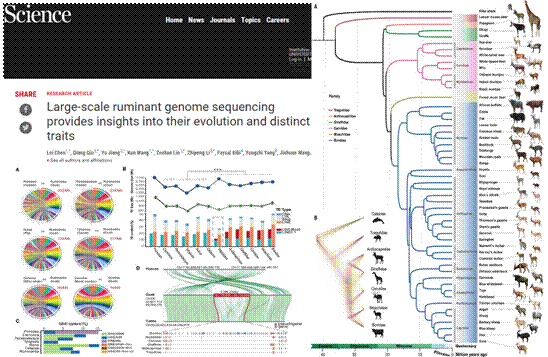
Among the three articles, the leading one is Large-scale ruminant genome sequencing provides insights into their evolution and distinct traits.Based on big data analysis and genome sequencing techniques, the genomes of 44 ruminants were sequenced, assembled and analyzed by whole genes. It covers all 6 families and more than half of the genus of the ruminant, clarifying the long-standing controversy about the development and evolution of the ruminant system and constructing the most credible phylogenetic tree of ruminant species. At the same time, the research explores the adaptive evolution mechanism of ruminants through in-depth exploration of ruminant's ability to adapt to complex environments and foods, and provides valuable data and reference for future research on ruminant animals and even mammals and human health.Lin Zeshan, a doctoral student enrolled in 2019 from the RCEES, is the co-author of the article. PhD students Liu Guichun, Liu Chang, Yang Jie, Zhang Chen, Yin Yuan, Zhang Ru, Wan Wenting, and master students Zhang Chen, Wang Zhongkai, Qin Yanli participated in the production of the article.
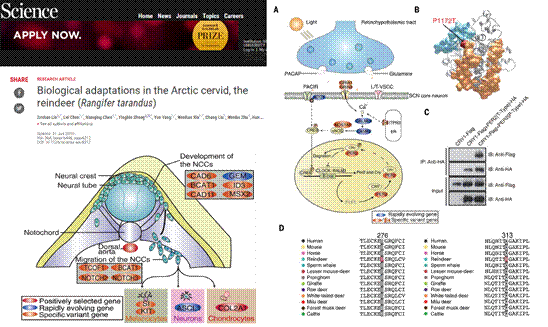
The research article Biological adaptations in the Arctic cervid, the reindeer (Rangifer tarandus) provides a more comprehensive and in-depth understanding of the adaptation of polar animals, but also provide important clues to some human health issues. For example, the effects of vitamin D on calcium deposition, and the regulation of the circadian clock on the treatment of human sleep disorders. The study also provided an important data base for the subsequent protection of reindeer.
The first author of the article is Lin Zeshan, a PhD student at the RCEES, who has done a lot of work in article writing and genomic data analysis. Since 2016, Lin Zeshan has studied for master’s degree and doctorate under the supervision of Professor Wang Wen. During his study for master degree, he published a genomic analysis article on reindeer on GigaScienceas the first co-author. In addition, PhD students Yang Yue and Xia Wenhao of the RCEES completed the experimental verification work and PhD student Liu Chang participated in the genome analysis.
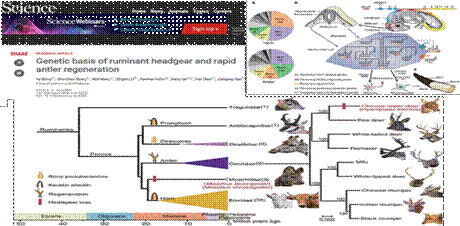
The research article Genetic basis of ruminant headgear and rapid antler regenerationconducted a multi-group large data analysis on dozens of ruminants, systematically revealing the genetic basis of horn evolution for the first time and analyzing the molecular mechanism of antler regeneration and its anticancergenetic basis. The identified genes and their specific mutations have opened up new directions for the research of horn development, mammalian organ regeneration and tumorigenesis.
Zhang Chenzhou, a master student of the RCEES, is the co-first author of the article. In 2016, he was sent to the RCEES to pursue a master's degree under Professor Wang Wen. During his master's degree, he published an article on the analysis of the elk genome in GigaScience (IF: 7.2, 2017) as the first author. And he has been accepted as a grade 2019 PhD candidate in our school and will continue to pursue a doctoral degree under the guidance of Professor Wang Wen. In addition, PhD student Liu Chang also participated in the production and publication of the article.
The RCEES was established in 2015 and began recruiting graduate students in 2016. At present, the Center has recruited 21 doctoral students and 39 master students (including 26 master students, 5 graduated masters, and 8 master-to-doctoral students). Besides the graduate students mentioned above, there are many outstanding students in the Center. For example, Zhang Xiaowei, a 2016 PhD student from the team of Professor Wang Ruiwu, published an article as the first author in the well-known journalEcologyin the field of ecology. Master student Zhuo Bingzhao from Professor Wang Wen’s team participated in the 2018 International Genetic Engineering Machine Design Competition (iGEM) and won the Silver Award in the competition.
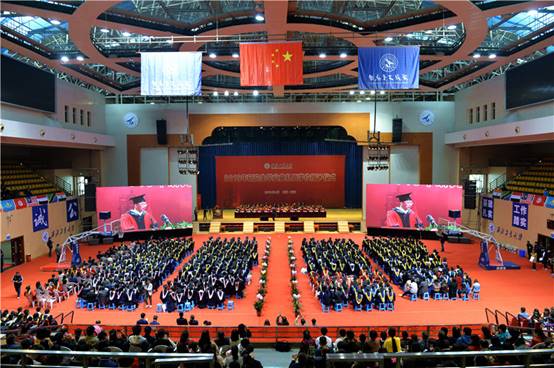
The Graduate School of Northwestern Polytechnical University attaches great importance to the cultivation of the graduate students’innovation ability in scientific research. To strengthen academic exchanges and cooperation and explore students training mode, various funds and programs have been established, such as graduate seed fund, doctoral thesis innovation fund, short-term overseas study exchange program, graduate interdisciplinary innovation team construction project, etc. In the past five years, our university's research and innovation ability has been significantly improved. A total of 19,007 high-level papers have been published, including 6,066 SCI searches, 2,198 national invention patents and 71 excellent doctoral thesis. The achievements of postgraduate education are remarkable with one of the first prizes for the National Teaching Achievement Award of Higher Education, one special prize for the Higher Education Teaching Achievement Award of Shaanxi Province, and 2 first prizes of the Graduate Education Achievement Award of the China Society of Academic Degrees and Graduate Education.